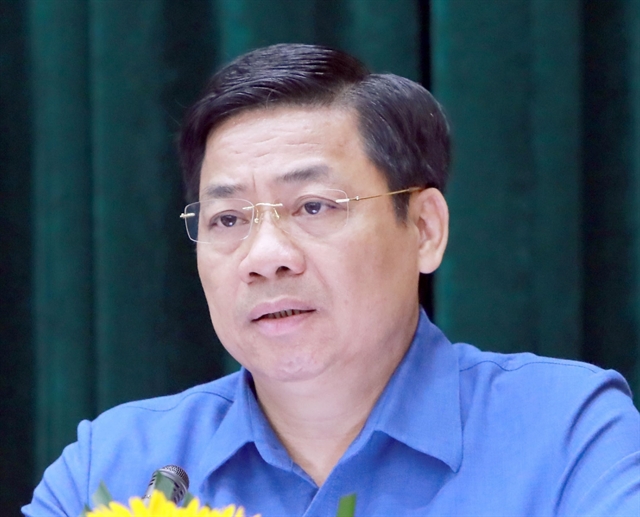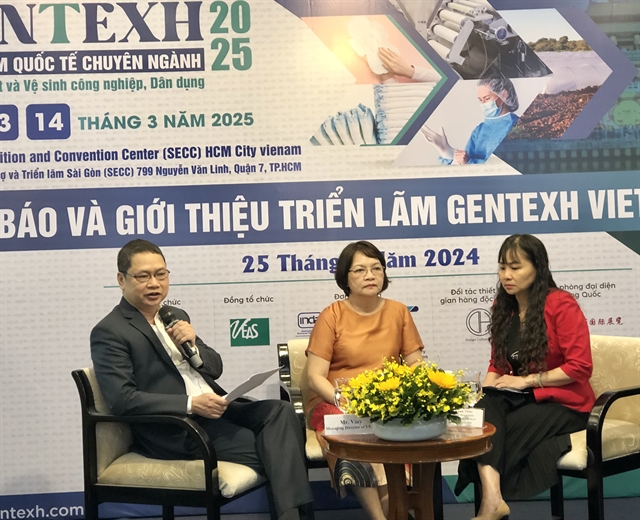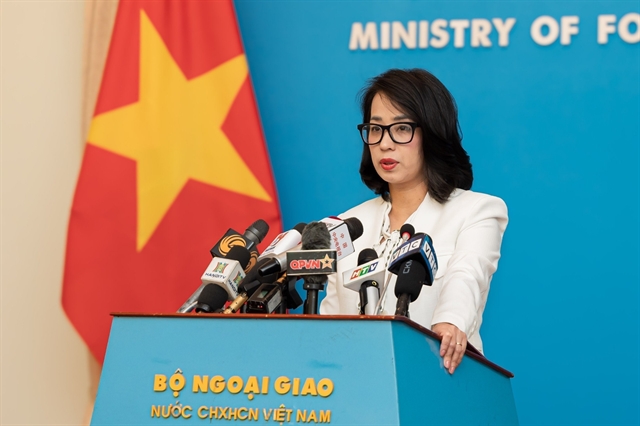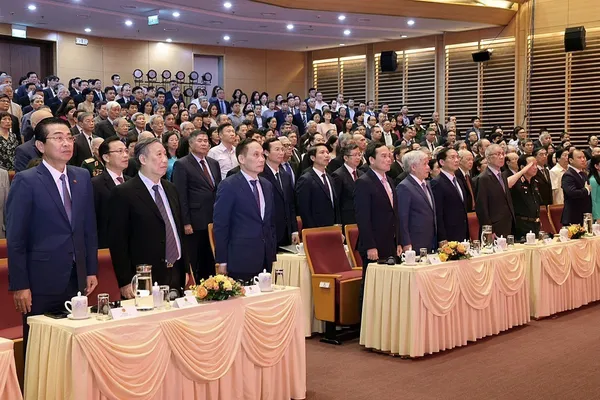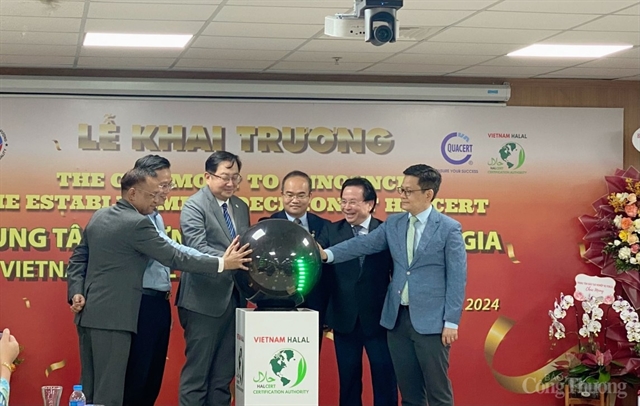 Opinion
Opinion

Vietnamese students and parents are celebrating Teachers’ Day, November 20, to hail the deeds of the teachers who are shaping the future generation of the country. It’s also an opportunity to celebrate Việt Nam’s educational achievement and to consider the future.
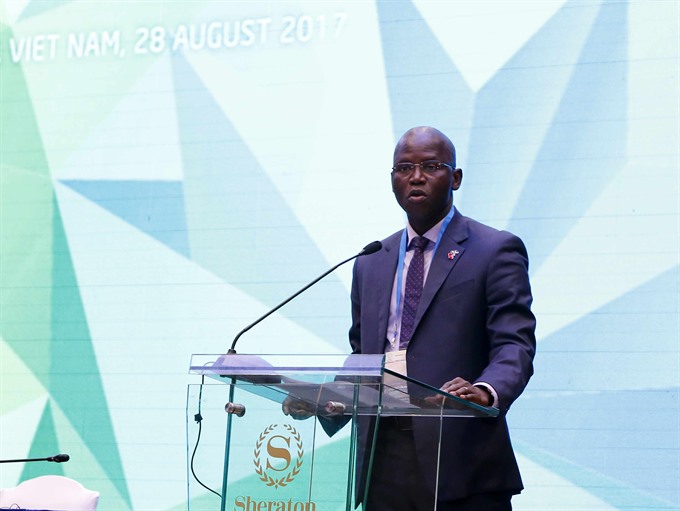 |
Ousmane Dione, Country Director for the World Bank in Việt Nam |
Vietnamese students and parents are celebrating Teachers’ Day, November 20, to hail the deeds of the teachers who are shaping the future generation of the country. It’s also an opportunity to celebrate Việt Nam’s educational achievement and to consider the future. I recently joined Party Secretary General, President Nguyễn Phú Trọng at the Việt Nam National University of Agriculture, where he discussed tertiary education reforms and the skills necessary for the future, to open new pathways for the country to continue to grow and prosper.
Việt Nam has already made significant strides on tertiary education. Access to tertiary education has expanded appreciably with enrolment more than doubling from 900,000 in 2000 to 2.2 million in 2016. A university graduate in Việt Nam will, in terms of salary, see a return on their investment in higher education that is on par with China and significantly higher than the regional average. In fact, it is among the highest in the world.
But Việt Nam aspires to accomplish much more. Analysis from the Vietnam 2035 Report shows that Việt Nam’s economic development is roughly where Korea’s was three decades ago. As Korea did in those 30 years, Việt Nam now needs to increase the quantity and quality of tertiary education and research institutions.
At the beginning of this school year, I visited Thái Nguyên University, the Economic and Technology College, and the Samsung factory in Thái Nguyên Province to better understand the skills needed for the future and how the education system in Việt Nam can help. Several issues came to light.
While enrolment in higher education has more than doubled, Việt Nam still has one of the lowest enrolment rates in the East Asia region. What’s more, highly-capable high school graduates generally have few relevant and high quality tertiary education options.
According to the World Economic Forum’s Global Competitiveness Report, 2017-18, Việt Nam ranked 84 out of 137 countries on the quality of its higher education system and 79 out of 137 on its capacity for innovation. Only two Vietnamese universities are in the top 1000 in the world, compared to 39 Chinese universities, including six in the top 100.
Party, State leader Nguyễn Phú Trọng, in his speech at the Việt Nam National University of Agriculture, highlighted the skills that students will need to be equipped for the future, such as creative and critical thinking, adaptability, and being able to work both independently and in teams. For that, he said, the university must continuously reform its curriculum, its teaching approaches, and pursue a more autonomous governance model.
These ideas reflect some of the most important global megatrends affecting higher education today, namely autonomy and accountability, internationalisation, disruptive technology and sustainable financing.
In the past 20 years, there has been a big push towards university autonomy with accountability. More successful higher education systems tend to provide a higher level of institutional autonomy to public universities while making them more accountable. Việt Nam is moving in the right direction on autonomy, but progress is limited in scope and clarity. There are gaps between policy intent and implementation such as the need to substantially revise the National Quality Assurance Framework to address both external and internal quality assurance aspects.
While overseas studentship, universities with campuses abroad, and international collaborative research and co-authorships are on the rise, Việt Nam still has low overall levels in these areas, particularly in collaborative research and in attracting foreign students and faculties. To address this, the country should provide a suitable legal framework, such as clarifying principles in the amendment to the Higher Education Law, which could provide universities incentives to promote internationalisation.
Another megatrend is the use of disruptive technology. Globally, 35 million students were enrolled in online learning in 2015. In countries with supply constraints, like Việt Nam, this provides a real opportunity to extend access to the population. Higher education institutions have also started to use big data and artificial intelligence for adaptive teaching-learning and data analytics. This provides flexibility in providing both personalised learning and collaborative work. Việt Nam’s higher education could use disruptive technology to further innovation and enhance excellence in research and training.
On sustainable financing, countries have used a mix of three strategies to achieve balanced financing needs: resource mobilisation, resource allocation, and diversification. Việt Nam’s public investments in higher education—0.25 per cent of GDP and 0.8 per cent of total Government spending—are lower than in basic education and, in fact, among the lowest of comparable countries. This should be a concern for a country with the goal of becoming a knowledge-based economy. Therefore, Việt Nam could explore several solutions, including cost-sharing options and moving toward formula funding or performance contracts. It is also perhaps the right time to restructure the funding channels through a single funding body for higher education to address the current fragmentation challenges.
As the Party Secretary General noted, the Higher Education Law Amendment, approved by the National Assembly’s ahead of the Việt Nam Teachers’ Day (November 20), is a good place to clarify some of these principles, and to move Vietnam up the ladder in the quality and quantity of tertiary education and research institutions.
Việt Nam’s primary and secondary education is already globally recognised for producing high quality and equitable learning outcomes, which contributes to Việt Nam’s high ranking in the World Bank’s recent Human Capital Index - 48 out of 157 countries - the highest ranking among all the lower middle-income countries. Key to Việt Nam’s future growth and prosperity will be to extend this achievement to higher level institutions.
For its part, the World Bank currently provides financial, advisory and analytical support for strategy development and policy reforms on higher education in Việt Nam, such as the drafting of the Higher Education Strategy/Master Plan 2021-30, and the roll out of related reforms. We are also supporting Vietnamese teachers with an ongoing Việt Nam Enhancing Teachers’ Education Programme, so that Vietnamese teachers are fully equipped to move Việt Nam’s education up a notch.
On this occasion, let me wish all Vietnamese teachers good health and happiness. Chúc mừng ngày nhà giáo Việt Nam. — VNS

